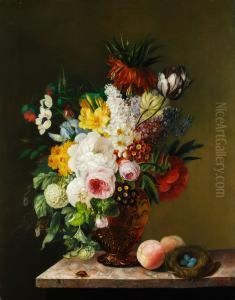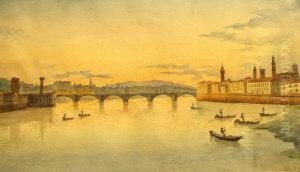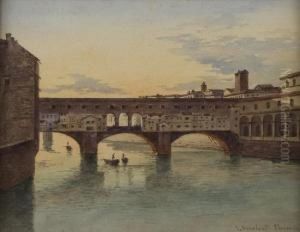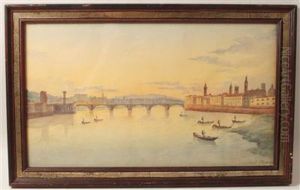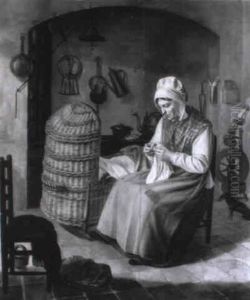Joannes Josephus Vervloet Paintings
Joannes Josephus Vervloet, also known as Jean-Joseph Vervloet, was a distinguished Belgian painter and engraver born in Mechelen, Belgium, in 1790. His artistic journey flourished during a period marked by significant political and social transformations in Europe, particularly the aftermath of the Napoleonic Wars and the reshaping of European territories. Vervloet's oeuvre primarily captures the essence of Romanticism, a movement that celebrated emotion, individualism, and the sublime beauty of nature, alongside a keen interest in historical and classical themes.
Vervloet received his early education in art at the Academy of Fine Arts in Mechelen, where he was deeply influenced by the teachings of classicism and early romanticism. His talent and dedication to his craft soon led him to further his studies and career in Brussels, a burgeoning artistic hub at the time. In Brussels, Vervloet became part of an artistic circle that was pivotal in the development of Belgian Romanticism, contributing significantly to the cultural and artistic identity of Belgium, particularly in the wake of its independence in 1830.
Throughout his career, Vervloet was known for his historical paintings, landscapes, and architectural views. His works often depicted scenes from Belgian and European history with a romantic flair, emphasizing dramatic light, shadow, and a meticulous attention to historical accuracy and detail. One of his notable contributions to art was his ability to capture Belgium’s architectural heritage, particularly its Gothic and Baroque churches, castles, and public buildings, at a time when the young nation was seeking symbols of its identity and history. These works not only highlighted his technical skill and artistic vision but also served as a visual documentation of Belgium's rich architectural landscape.
Vervloet's paintings and engravings were widely appreciated for their evocative portrayal of historical and natural scenes, earning him recognition and accolades during his lifetime. He exhibited his works in various salons and exhibitions, both in Belgium and abroad, contributing to the international appreciation of Belgian art in the 19th century. Despite his success, Vervloet remained closely tied to his Belgian roots, drawing inspiration from the country's landscapes, historical events, and architectural beauty.
Joannes Josephus Vervloet passed away in 1872, leaving behind a legacy that continues to be celebrated for its contribution to the Romantic movement and Belgian art. His works are preserved in several museums and collections, where they continue to be studied and admired for their historical significance and artistic merit. Vervloet's dedication to capturing the spirit of his time and place has ensured his position as a significant figure in the history of European art.
